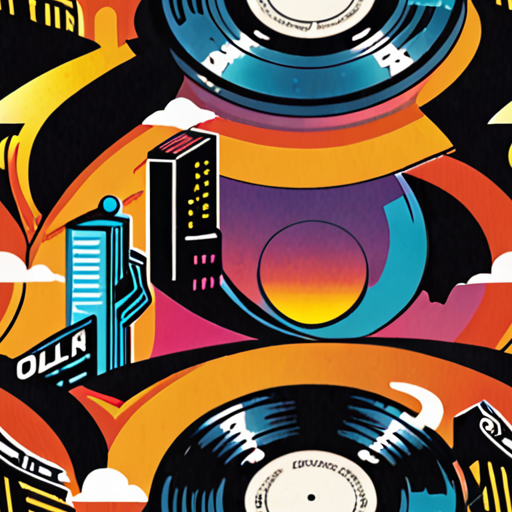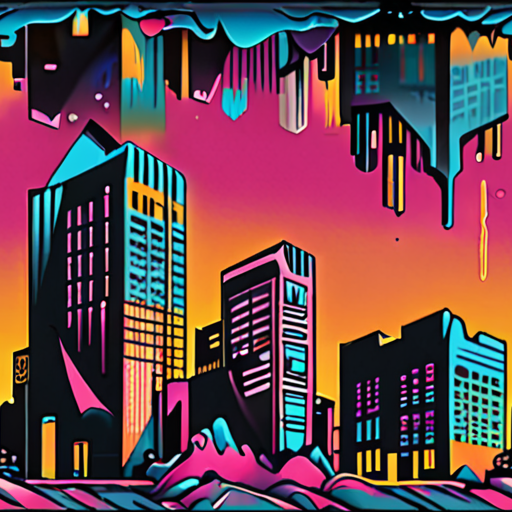The evolution of hip hop culture has been a transformative force in shaping modern society, leaving an indelible mark on music, art, fashion, and identity. From its humble beginnings in the 1970s Bronx to its current global reach, hip hop has undergone significant changes, adapting to new technologies, social movements, and artistic expressions. With its unique blend of rhythm, rhyme, and self-expression, hip hop has become a powerful medium for storytelling, social commentary, and cultural critique. As we explore the impact of hip hop on society, we’ll delve into its origins, development, and current trends, examining how it has influenced American culture, shaped identities, and continues to evolve as a dynamic and ever-changing force.

How Hip Hop Culture Is Changing the World
Hip hop culture has become a global phenomenon, shaping various aspects of modern life, from music and fashion to technology and education.
-
The Evolution of Music Styles
Hip hop has branched out into numerous sub-genres, influencing contemporary music styles and paving the way for future artists.
- From gangsta rap to conscious rap, hip hop has addressed social issues and personal struggles, resonating with listeners worldwide.
- The genre’s fusion with electronic dance music (EDM) has led to the creation of new sounds and experiences.
-
Fashion and Style
Hip hop’s impact on fashion is undeniable, with streetwear becoming a staple in many people’s wardrobes.
- Designers have incorporated hip hop-inspired elements into high-end fashion, blurring the lines between streetwear and luxury.
- The rise of sneaker culture has turned sneakers into a status symbol, with limited-edition releases generating immense hype.
-
Technology and Innovation
Hip hop has driven technological advancements, particularly in the realm of music production and distribution.
- Software programs like FL Studio and Ableton Live have democratized music production, allowing artists to create and share their work easily.
- The proliferation of streaming services has transformed the way we consume music, making it more accessible and convenient.
-
Art, Entertainment, and Education
Hip hop has expanded beyond music, influencing visual arts, film, and television, as well as educational initiatives.
- Museums and galleries have recognized hip hop’s cultural significance, showcasing exhibits and installations that celebrate its history and impact.
- Documentaries and films have explored the genre’s evolution, highlighting its role in shaping social justice movements and personal narratives.
- Schools and educational institutions have incorporated hip hop into curricula, recognizing its potential to engage students and promote critical thinking.
-
Language, Dance, and Politics
Hip hop has contributed significantly to linguistic diversity, introducing new slang and idioms into mainstream language.
- Dance styles like breaking and popping have been recognized as legitimate forms of expression, with competitions and festivals celebrating their beauty and athleticism.
- Hip hop has played a crucial role in social justice movements, addressing issues like racism, police brutality, and economic inequality through lyrics and activism.
Hip hop culture’s far-reaching influence is a testament to its power and resilience, continuing to shape the world in profound ways.
The Four Cultures of Hiphop
Hiphop culture encompasses four distinct elements that have evolved over time, shaping the genre into what we know today.
-
MCing (Rapping)
Rap music is a core component of hiphop culture, originating in the 1970s in the Bronx, New York. MCing involves delivering lyrics over beats, often telling stories, expressing emotions, and addressing social issues.
- Early pioneers of rap music include DJ Kool Herc, Grandmaster Flash, and Afrika Bambaataa.
- Rap has branched out into various sub-genres, such as gangsta rap, conscious rap, and trap.
-
DJing (Turntablism)
Djing involves manipulating sound recordings on turntables, creating unique sounds and rhythms through scratching, mixing, and beat-juggling.
- Pioneers of djing include Grand Wizzard Theodore, Grandmaster Flash, and Jazzy Jay.
- Djing has influenced electronic dance music and continues to evolve with advancements in technology.
-
Breakdancing (B-boying/B-girling)
Breakdancing originated in the 1970s as a form of self-expression and competition among young people in urban areas.
- Breakdancers develop intricate footwork, spins, and freezes, showcasing their skills in battles and performances.
- Breakdancing has become a recognized sport, with international competitions and a growing community of enthusiasts.
-
Graffiti Art
Graffiti art emerged in the 1970s as a means of self-expression and social commentary, often featuring vibrant colors and bold typography.
- Graffiti artists, known as writers, use stencils, spray paint, and other materials to create murals and street art.
- Graffiti has evolved into a respected art form, with galleries and museums showcasing works by renowned artists.
Hiphop culture continues to evolve, incorporating new styles, technologies, and themes while remaining true to its roots and core values.

Trends in Hip-Hop
In recent years, hip-hop has evolved significantly, incorporating various styles and influences to create a unique sound.
- Soulful and Jazz-Influenced Samples: Producers are revisiting classic soul and jazz records, sampling iconic tracks and reworking them into modern beats.
- Trap Beats and Atmospheric Textures: The resurgence of trap beats is accompanied by lush, atmospheric textures, adding depth and complexity to hip-hop productions.
- Blending Genres: Artists are experimenting with fusing hip-hop with other genres, such as electronic, rock, and R&B, resulting in innovative and captivating sounds.
- Storytelling and Lyrical Depth: Many artists are focusing on storytelling through lyrics, exploring themes of social justice, personal struggles, and self-empowerment.
- Visual Storytelling: Music videos have become an essential aspect of hip-hop, with many artists investing heavily in high-quality visuals to complement their music.
As hip-hop continues to evolve, we can expect to see even more experimentation and innovation in the coming years.
Key Players in the Industry
- J. Cole: Known for his introspective and personal lyrics, J. Cole has been a driving force in pushing the boundaries of hip-hop storytelling.
- Kendrick Lamar: As a pioneer of conscious rap, Kendrick Lamar has consistently pushed the envelope with his thought-provoking lyrics and socially charged messages.
- Drake: With his versatility and ability to blend different styles, Drake has become a dominant force in contemporary hip-hop.
- Travis Scott: Travis Scott’s experimental approach to production and live performances has helped shape the sound of modern hip-hop.
Conclusion
Hip-hop is constantly evolving, and its future looks bright. With a focus on storytelling, lyrical depth, and visual innovation, the genre is poised to continue pushing boundaries and inspiring new generations of artists and fans alike.

How Has Hip-Hop Changed American Culture?
Hip-hop’s influence on American culture extends far beyond its musical roots, shaping the way we communicate, express ourselves, and interact with one another.
-
African American Vernacular English (AAVE)
Hip-hop popularized AAVE, which has become a staple of modern language, influencing the way people from diverse backgrounds communicate and connect.
-
Cultural Representation
Black youth have seen significant representation in various forms of media, from music and film to television and social media, allowing them to see themselves reflected in the world around them.
-
Social Commentary
Hip-hop serves as a powerful tool for social commentary, addressing issues like racism, inequality, and social justice, sparking conversations and inspiring change.
-
Economic Impact
The hip-hop industry has generated billions of dollars in revenue, creating jobs, stimulating local economies, and contributing to the growth of urban communities.
-
Influence on Fashion and Art
Hip-hop has had a profound impact on fashion, art, and visual culture, inspiring new styles, movements, and creative expressions that continue to shape contemporary aesthetics.
-
Global Reach
Hip-hop has transcended geographical boundaries, becoming a global phenomenon, with artists and fans from diverse cultures and backgrounds embracing the genre and its values.
As hip-hop continues to evolve, its influence on American culture remains undeniable, reflecting the diversity, creativity, and resilience of the human spirit.
The Five Pillars of Hip Hop
I’m excited to share my knowledge about the foundation of hip hop culture.
-
Music
Music is the backbone of hip hop, encompassing various genres such as rap, DJing, MCing, and beatboxing. It serves as a means of self-expression, storytelling, and social commentary.
-
Dance
Dance plays a vital role in hip hop, with styles like breaking, popping, locking, and voguing originating from the culture. Dance allows individuals to showcase their creativity and athleticism.
-
Art and Visual Expression
Hip hop art encompasses graffiti, visual arts, and fashion. Graffiti artists use murals and street art to convey messages and express themselves, while fashion designers incorporate bold colors and patterns to reflect the culture’s vibrant spirit.
-
Literature and Poetry
Literary works, such as spoken word poetry and hip hop literature, have become increasingly popular. These forms allow individuals to express themselves through words, often addressing social issues and personal experiences.
-
Culture and Community
Hip hop culture thrives on community and camaraderie. From block parties to cyphers, gatherings bring people together, fostering a sense of belonging and shared identity.
As a fan of hip hop, I appreciate how these five pillars come together to create a rich and dynamic culture that continues to evolve and inspire.

Three Key Elements of Hip Hop Culture That Became Popular
The hip hop culture has evolved significantly since its inception, and several aspects have gained immense popularity worldwide.
-
DJing
DJing involves the creative manipulation of beats and music, which has become an integral part of hip hop culture. DJs play a crucial role in setting the tempo and atmosphere for rap battles, parties, and live performances.
-
MCing (Rapping)
MCing, also known as rapping, is the art of putting spoken-word poetry to a beat. Rappers use their lyrics to express themselves, tell stories, and convey messages, making it a powerful tool for self-expression and social commentary.
-
Breaking (Dance Form)
Breaking, also known as b-boying or b-girling, is a dynamic dance style that originated in the 1970s. Dancers perform intricate footwork, spins, and flips to the rhythm of hip hop music, showcasing their creativity and athleticism.
These three elements have not only contributed to the evolution of hip hop culture but have also influenced various forms of music, dance, and art around the world.

0 Comments